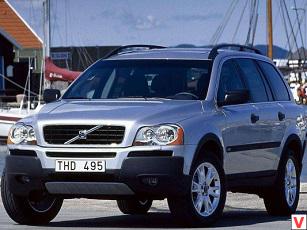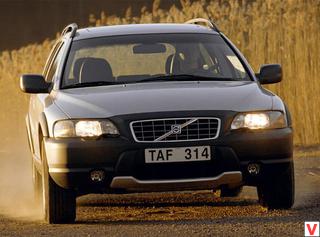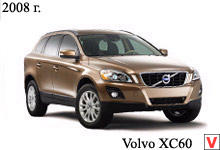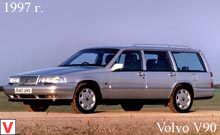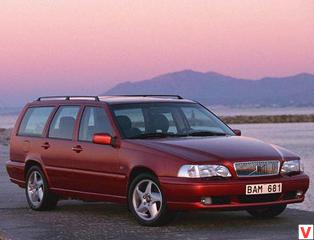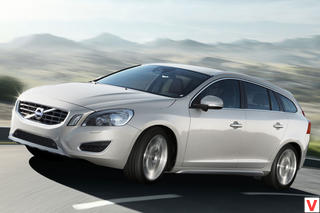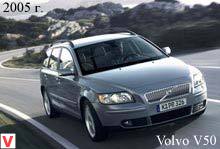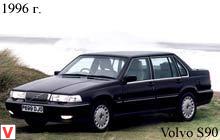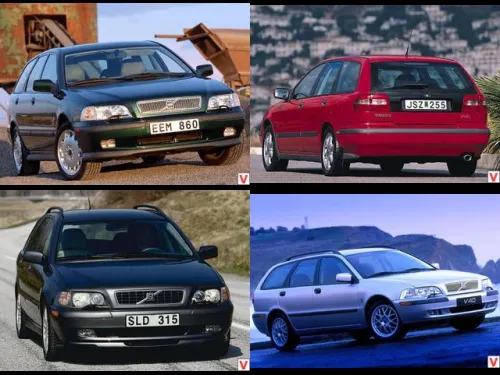
A new generation of Volvo cars began with the V40. Together with the new image, Swedish cars received new names. Beginning with the "sorokovka", all models were denoted not by three numbers, but by one letter and two numbers. Moreover, the letter denotes the type of the body: “S” is a sedan, and “V” is a station wagon. The release of the five-door Volvo V40 in 1996 significantly strengthened the position of the Swedish company in the compact car sector. Elegant, dynamic, with an attractive design and compact body - Volvo V40 attracted the attention of buyers.
In addition to Volvo’s traditional high levels of safety, quality and reliability, the V40 is designed to implement new terms, such as driving pleasure and attractive design. On the Volvo V40, produced in 1995-2000, a total of six different engines were installed, including five petrol units and one diesel. The latter has a volume of 1.9 liters and a power of 90 or 92 hp Petrol engines have the following volumes and capacities: 1.6 l. (105 hp), 1.7 l. (116 hp), 1.8 l.
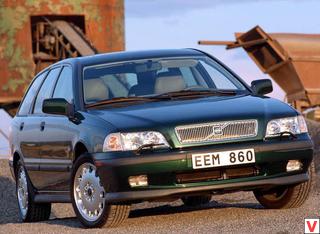
(125 hp), 1.9 l. (140 hp), 1.9 l. turbocharged low pressure (160 hp) and 1.9 liters turbocharged high pressure (200 hp). The choice of transmission consists of two 5-speed manual and 4-speed automatic transmission. The manual gearbox is slightly different in design for two gasoline engines; depending on the engine torque.
The two-liter and turbo diesel engines use a version with wider gears to transmit higher torque. The transfer coefficients are almost equal. Turbodiesel is available only with manual gearbox. Automatic transmission is electronically controlled and has three different control modes. The torque converter and gear ratios are optimized for use with four-cylinder engines.
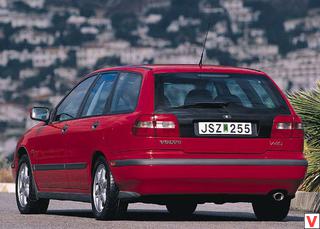
Modes S (sport) and E (economical) are selected by switching the same key. W mode (winter) has its own switch. Together, the engine and transmission provide the driver, along with a lot of power, with quick response and smooth operation. The goal in developing the Volvo V40 was to create the safest cars in the compact class. One of the new features was that security systems were developed as an integral part of the car, starting with the very first computer image. This has made it possible to achieve optimal interaction between different safety systems - components of the structure, seat belts and airbags - for various types of traffic accidents.
Airbags inflating sequence: first, the airbag inflates against the windshield before fragments can injure the passenger. This reduces the risk that the airbag itself will cause injury, if the passenger is not sitting in his usual position. Front seat belts, self-adjusting to the height of the shoulder, equipped with a pre-tensioning system. All Volvo V40 are equipped with immobilizers. Immobilizer is a system that prevents theft by a person who does not have a real car key.
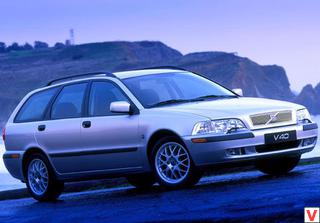
The work of the immobilizer is slightly different in the case of gasoline and diesel engines. For gasoline engines, fuel injection and ignition are blocked using an “electronic lock” in the engine control device. The immobilizer also blocks the starter. In diesel engines, fuel intake is blocked by the coded starting device and the fuel pump valve. The starter is also blocked. The immobilizer system is connected to the diagnostic system, and also performs self-diagnosis. The system is controlled with a car key, which has a built-in transponder with a unique code for each key. Only using this key can the system be controlled, so only a person with a real key can use the car.
It may be noted that the first-generation V40 station wagons were very popular in Europe and now there are quite a lot of them on the secondary market. In 2000, the Volvo V40 family has undergone a slight restyling. So small that outwardly updated cars are practically no different from old ones. Yes, and in the cabin changes at least. But a big advantage of the Volvo V40, released after 2000, is that these cars have fixed minor flaws that could upset the Volvo owners of the first years of production from time to time. Over the years, the aesthetics of the family received approval and praise, so the Swedes did not fundamentally change the design of the car.
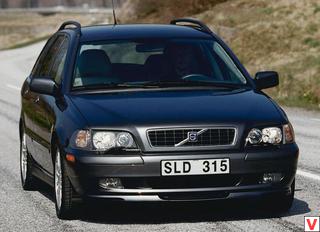
Refinement has undergone a number of exterior parts, for example, bumpers. Has become more transparent optics headlights and rear lights. The updated back panel of V40 looks more complete.
After upgrading, the Volvo V40 acquired an advanced WHIPS system that protects passengers from whiplash injuries. For better side impact protection, the V40, in addition to side airbags, is also equipped with inflatable “curtains” as standard. Standard child seat mounting system (ISOFIX), greatly facilitating its installation in the car.
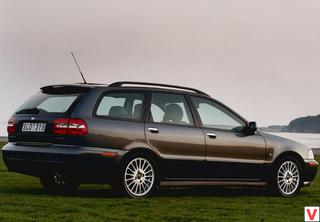
By the way, Volvo is the first automaker in the world, producing a safe child seat with the ISOFIX system, which is installed against the direction of the car. The interior is distinguished by excellent ergonomics, sturdy finishing materials and external elegance. Many elements of the interior in cars after the year 2000 have been updated. Has undergone a reorganization of the dashboard. Headlight switches, climate control and audio system (which can now perform the functions of a "navigator") have become much more convenient and functional.
Reworked center console: increased compartment for small things, appeared coin box and a 12-volt outlet. New seat padding gives them a sportier shape and increases comfort. After 2000, the range of engines began to look like this: 1.6 l. (109 hp), 1.8 l. (122 hp), 2.0 l. (136 hp), 2.0 l.
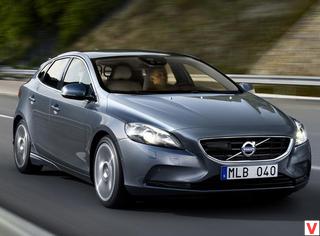
with a low-pressure turbine (163 hp) and 2.0 liters. with high-pressure turbine (200 hp). Plus, a new 1.9-liter diesel engine with 115 hp common rail injection system has appeared. A number of engines have been replenished with modernized two-liter power plants with a low-pressure turbine. Power remained the same, and torque increased.
At the same time, the fuel consumption of engines has decreased, without exception. The most powerful version is the Volvo T4, under its hood is a 200-horsepower engine (until 2000 its volume was 1.9 liters, and then 2.0 liters). Up to a hundred, this power unit accelerates in 7.3 seconds, the maximum speed of 235 km / h. Volvo V40 front wheel drive. The independent multi-link rear suspension (the company even gave it its own name - Multi Link) provides excellent driving characteristics. Both manual and automatic transmissions are offered. Automatic transmissions on the Volvo V40 are of two types.
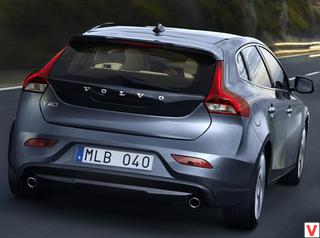
First, a 4-speed gearbox was installed on the car, and after 2000 a more modern 5-speed automatic appeared. Subjected to modernization and chassis. The McPherson springs became even stiffer in front, and the shock absorbers, on the contrary, were significantly softened. The geometry of the steering gears has changed, thanks to which the elastic elements have gained greater freedom of movement and began to work more efficiently. We managed to stretch the wheelbase by 12 mm, and the front track by 16.
Adjusting the rear suspension and providing the V40 with oversized tires, the Swedes achieved the desired compromise: the Volvo V40 has become smoother, but the directional stability and controllability in cornering are high. speed. The brakes and steering remained unchanged, as they had previously met international standards. Thanks to the new engine mounts and improved cabin sound insulation, the V40 has become quieter. Thanks to galvanizing and high-quality iron, Volvo V40 is able to resist corrosion for about 10-15 years without problems. Model V40 in terms of performance and safety level in no way inferior to the sedan, plus the convenience of five doors and a station wagon.
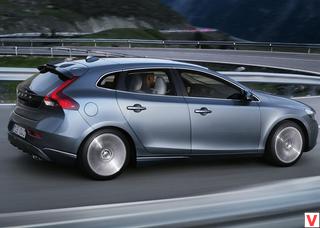
Perfect car for people accustomed to an active lifestyle. In 2004, the Volvo V40 station wagon was discontinued. The Volvo V40 five-door hatchback was presented at the 2012 Geneva Motor Show.
The car has replaced the model S40, belongs to the premium segment of the European class C, where it competes for the preferences of potential buyers with such models as the BMW 1-series and Audi A3. Usually, with the letter “V” the Swedes designate wagons, so that such a name unambiguously hints at the practicality of the car. Produced model in Belgium. The length of V40 is 4369 mm, width is 1802 mm (with mirrors of 2041 mm), height is 1445 mm, wheelbase is 2647 millimeters. The model was rewarded with a dynamic appearance: a swift silhouette, a window line rising to the back, a daring vyshtampovka stretching along the body.
In front of the eye catches the relief hood, which descends to the front wings on the sides. Stylish front lighting veils harmoniously go into a bumper of complex shape with a mass of aerodynamic elements and a narrow slit of the lower air intake. Along the lower edges of the front fairing are strips of LED daytime running lights. Two characteristic smooth-shaped ribs run through the entire side of the car, starting from the hood and getting lost in the stern. The lower edge inflates and makes powerful the threshold and the lower part of the door, the upper one forms a beautiful "window sill".
The domed roof rests on the airy front and middle racks, the powerful rack forms the monumental rear. Behind the car, a bulging tailgate has sunk into the rear, in a neat glass above which is located a spoiler that continues the roundness of the roof. Salon meets comfortable, well-shaped seats with pronounced lateral support (electric as an option). The multifunction steering wheel has tides in the area of the grip, behind it is a futuristic monitor (large color screen) of the dashboard, front dashboard with simple lines - in the center of the display, which displays information settings music, air conditioning, rear view camera and map navigator.
The trunk of the Volvo V40 allows you to carry 335 liters of cargo. The car from the very beginning is presented with a wide range of petrol and diesel engines. Petrol Ford engines: 1.6 EcoBoost (150 or 180 hp) paired with a mechanical or robotic PowerShift gearbox. Plus own "Volvovsky" five-cylinder engine of 2.5 liters (254 hp). This power unit accelerates the five-door hatchback to "hundreds" in 6.7 seconds. Diesel: 1.6 l. (115 hp) with only 6 MCP. 2.0 liters (150 hp) and 2.0 l.
(177 hp) with 6-speed manual or 6 APK as an option. As standard, the machine is equipped with start-stop technology and regenerative braking system. Independent suspension, front MacPherson strut, and rear multi-link.
But the main thing is safety, and Volvo engineers stuffed the V40 to the eye: the City Safety system (preventing collisions at speeds of less than 50 km / h), the Pedestrian Detection system (detecting pedestrians suddenly appearing on the road and stopping cars) blind spots, automatic parking attendant, ABS, EBD with an assistant for emergency braking, DSTC (dynamic stabilization and traction control), side impact protection system, protection from rear impact from whipping injuries, airbags in the cabin. The Volvo V40 is the world's first airbag car for pedestrians. In front of the machine there are seven sensors that transmit signals to the control unit.
When he decides that there was contact with the legs of a person, the squibs unlock the hood, the airbag is triggered. The pillow performs a dual function: raises the hood by 10 cm and covers the rigid elements in the windshield. The whole process takes a few hundredths of a second.
